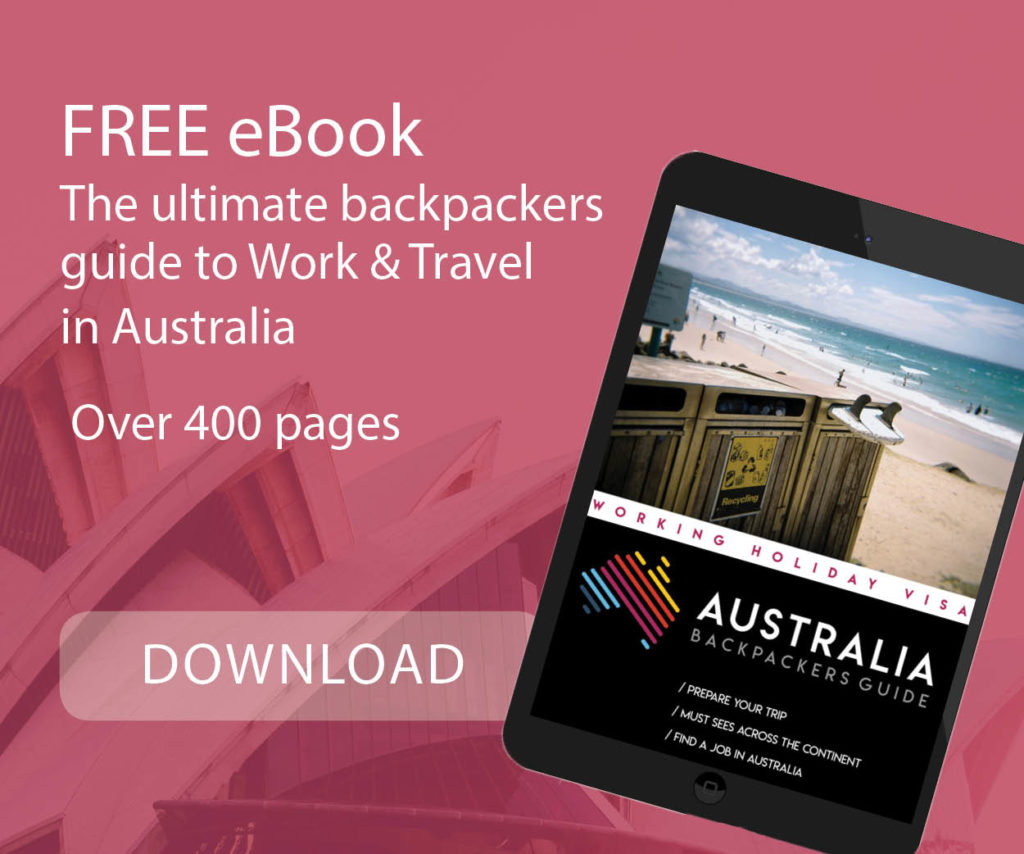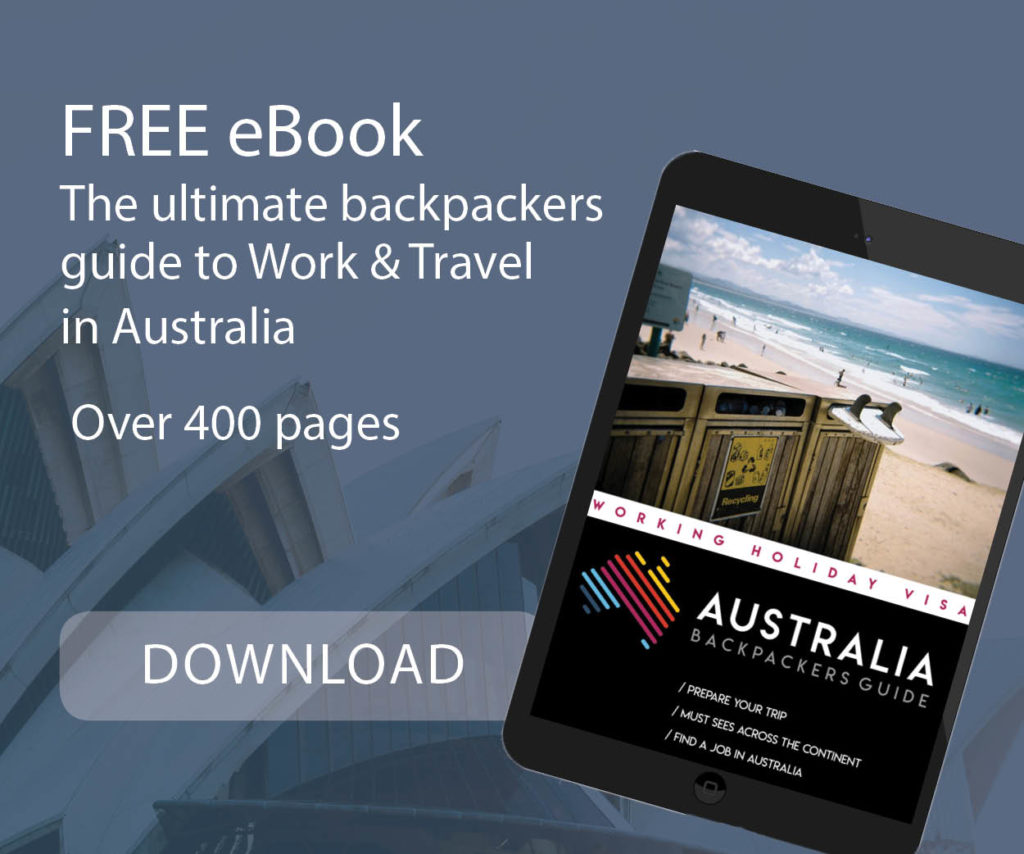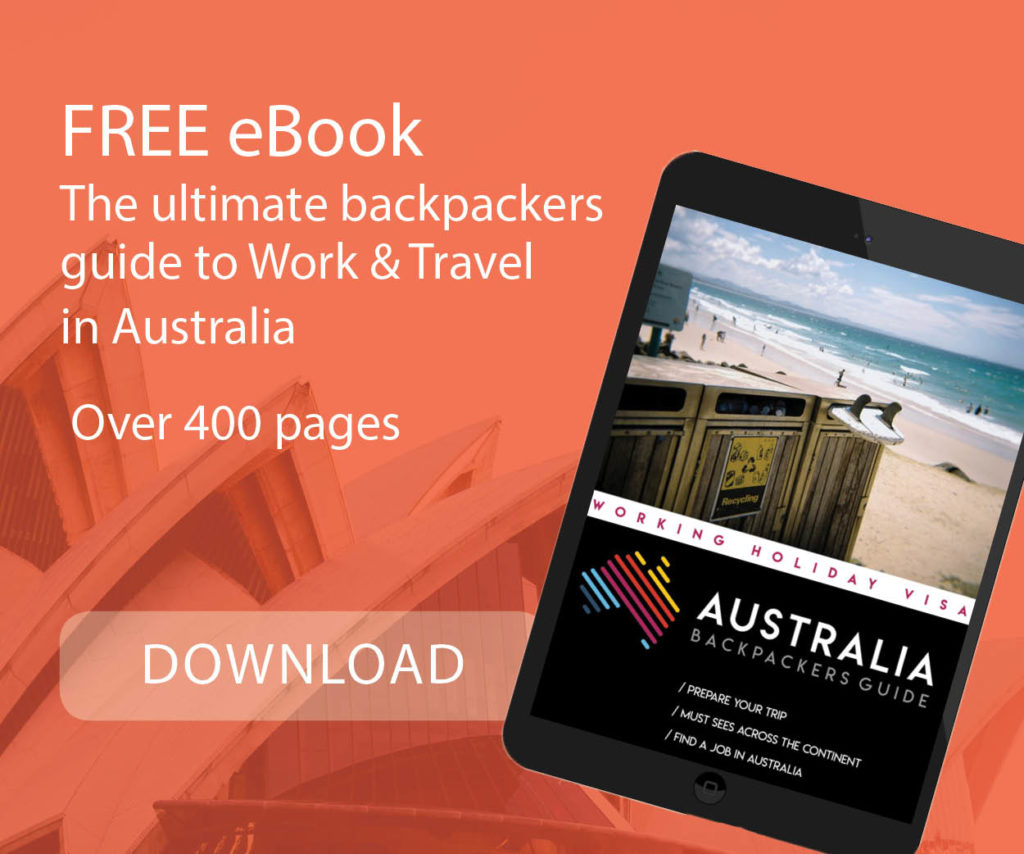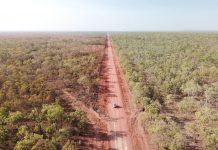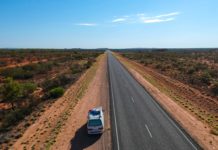
Exploring Australia without buying your own vehicle is not only possible but often more relaxing, sustainable, and budget‑friendly. From ultra‑cheap coach passes to scenic train journeys, here’s everything you need to know to hit the road (or rails) Down Under in 2025.
Table of Contents
Why Travel Car‑Free in Australia?
- Cost Savings: Avoid high rental, fuel, maintenance, and insurance fees.
- Eco‑Friendly: Lower your carbon footprint by using public transport and rideshares.
- Infrastructure Improvements: Major upgrades to buses, trains, and regional flights make car‑free travel seamless.
- Freedom & Flexibility: Hop on a hop‑off coach pass, book spontaneous flights, or join day tours—no need to worry about parking or road safety.
Renting a car or campervan
Many travellers decide to rent a vehicle during their stay in Australia whether it is to get around a city or to travel further afield. Car rental is often the cheapest and easiest way to get around a big city, where public transport may not reach the outskirts or lesser known tourist spots. If you want to travel for several weeks, consider renting a van to sleep in the vehicle thus save on accommodation.
Prices differ depending on the agency, pick up location, type of vehicle etc. They start at around 40 AUD/day and can go up to more than 250 AUD/day depending on the model, the season and the rental period.
💰 Count from $40/ day for an Economy Car, $60/ day for a 5-door car and $90/ day for a 4WD or a station wagon.
If you intend to rent a campervan to make your trip a bit more comfortable, we recommend you use an online comparaison tool to get the best deals possible :
Budget Flights
Australia is a vast country. Sometimes, taking a flight can be more time-efficient and economically sensible than any other transport, especially when crossing between states or exploring far-flung areas like Western Australia or the Northern Territory. Flights are generally quite affordable, but yet often remain outside the budget for a backpacker. The major airlines are Jetstar, Qantas, Virgin. It is recommended to book a flight during week rather than the weekend to take advantage of cheaper rates.
Flight sales often drop on Tuesday afternoons—set fare alerts on Skyscanner or Hopper.
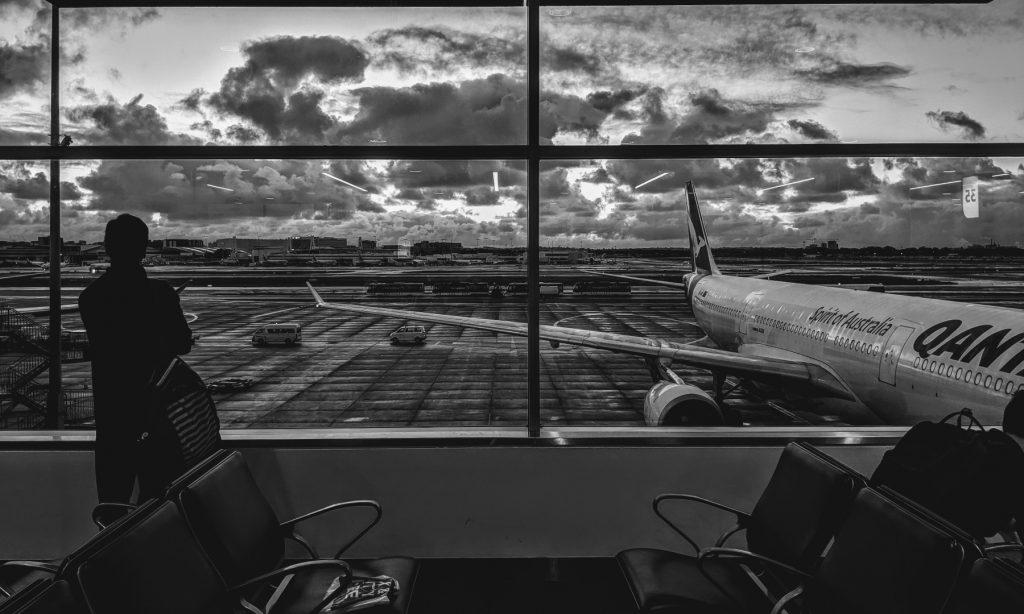
Bus Travel
National Coach Passes
- Greyhound Australia: Unlimited travel passes from 7–28 days, covering 5,000+ stops .
- Oz Experience / Busabout: Hop‑on hop‑off loop passes along the East Coast, Red Centre and Top End.
👍 Tip: Book 2+ weeks in advance for 15–30% discounts, and use student/YHA membership for extra savings.
Regional Buses
- Firefly Express (NSW–SA): Great for Adelaide–Melbourne runs.
- Premier Motor Service (NSW–Qld–Vic): Modern coaches with Wi‑Fi and power outlets.
- Integrity Coach Lines (NT): Key for Darwin ↔ Ayers Rock commuters.
How much it costs to travel by bus?
Here are some fares applied by Greyhound on popular routes:
Sydney – Cairns: from $599
Melbourne – Cairns: from $672
Adelaide – Alice Springs: from $205
Darwin – Adelaide: from $467
Brisbane – Cairns: $475
Melbourne – Brisbane: $199
Sydney – Brisbane: $126
Prices vary, but booking in advance can secure lower fares. Look for package deals for additional savings.
Pros and Cons of bus travel in Australia
➕
- Extensive route network covering key destinations.
- Comfortable and safe travel experience.
- Great for meeting fellow backpackers and locals.
- Cost-effective compared to owning a vehicle.
➖
- Limited flexibility with fixed schedules.
- Dependency on bus stations for pickups and drop-offs.
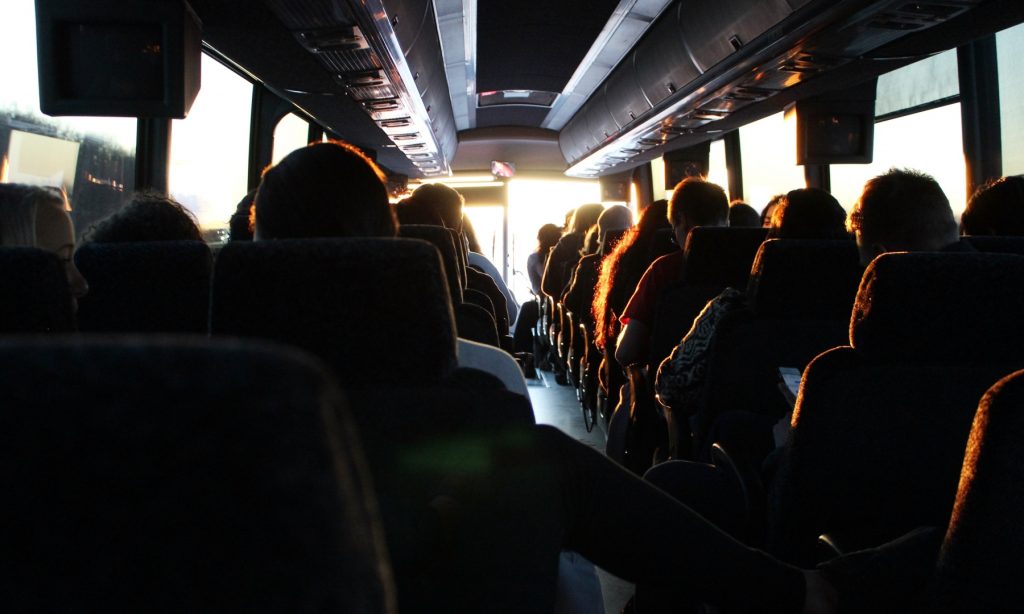
Train & Rail
- The Ghan (Adelaide ↔ Darwin): Iconic 54‑hour Outback journey.
- Indian Pacific (Sydney ↔ Perth): Cross‑continent epic in 65 hours.
- XPT / Xplorer (NSW): Budget‑friendly day and overnight services.
- Spirit of Queensland: Modern tilt‑train with lie‑flat seats & café car.
👍 Tip: Look for “rail pass” discounts in shoulder seasons (April–May / Sep–Oct) to save up to 40%.
How much does a train ticket cost?
Here are some fares to give you an idea of the cost of a trip by train.
Sydney – Perth: from $2345
Melbourne – Adelaide: $125
Adelaide – Alice Springs: from $1485
Alice Springs – Darwin: from $1235
Adelaide – Darwin: from $2475.
More Information: Great Trains Australia
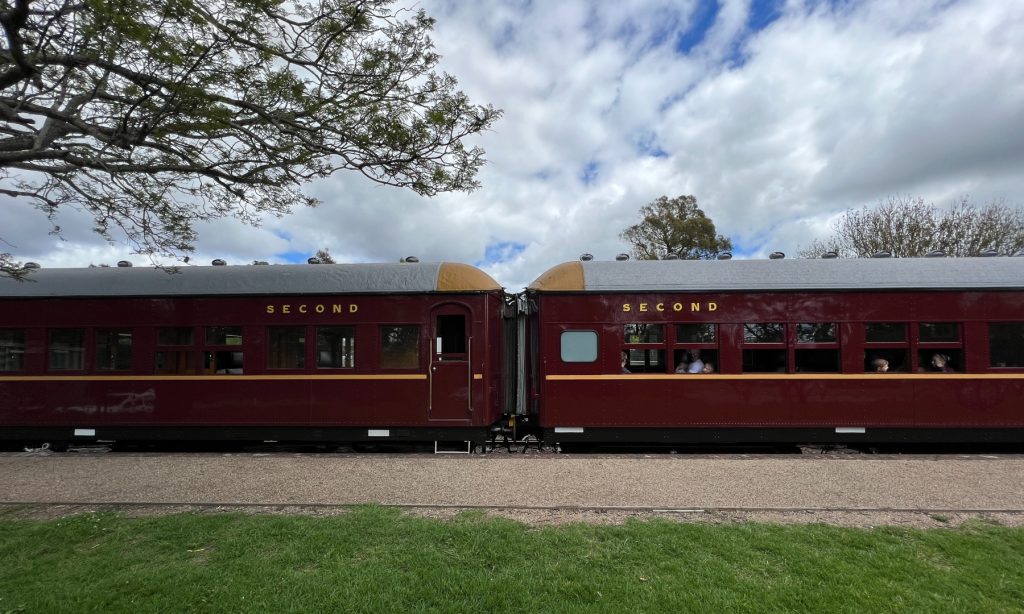
Rideshare & Hitchhiking (with caution)
Widespread in Australia, carpooling is a very economical way to travel while sharing your experience with other travellers. This is a very good way to travel through Australia if you don’t have your own vehicle.
To search for a “lift” you can go to sites such as: www.coseats.com or check the Facebook pages of the city you are staying. More Info: Ridesharing Australia.

Hitchhiking works pretty well in Australia as people are usually friendly and you will get rides pretty easily.
Generally, it is not illegal to hitchhike in Australia. However regulations vary from state to state so make sure you always check where you are! For example, it is illegal in Queensland and Victoria. Hitchhicking is legal in Tasmania, however Tasmania Police has advised against it. Generally in Australia it is illegal to hitchhike on motorways.
Always take precautions: travel in pairs, let someone know your plans, and trust your instincts.
Join Organized Tours
Joining tours can relieve the stress of planning and navigating public transport schedules. Whether it’s a snorkeling trip in the Great Barrier Reef, a guided tour in the Daintree Rainforest, or a desert adventure in the Outback, tours provide comprehensive experiences with the convenience of organized transport.
Tips for successful travel without a car in Australia
- Plan Ahead: Check schedules and book tickets in advance, especially during peak tourist seasons.
- Stay Connected: Use apps and websites like Google Maps, Rome2rio, and local transport apps for real-time information.
- Pack Light: Especially if you plan to use public transport frequently or walk considerable distances.
- Be Flexible: Sometimes the best adventures are unplanned. Allow for changes in your itinerary based on local recommendations or weather conditions.
📱 Must‑Have Apps & Resources
- Rome2Rio: Compare bus, train, ferry, and flight routes+prices.
- GoCatch, 13CABS: Local taxi and rideshare booking.
- Transit, Citymapper: Real‑time arrival info in major cities.
- TripIt: Organize all your bookings in one itinerary.
- WikiCamps, CamperMate: For free or cheap camping if you decide to mix in van hire.

FAQs on travelling without a car
⚠️ Is it safe to travel without a car in Australia?
In short, yes. Thousands flock to travel Australia every year, so no matter what mode of transport you choose, you will most likely come across others also travelling or even doing the same route as you.
❓What is the most cost-effective way to travel Australia?
Book everything well in advance! Depending on the distance or travel time, a flight may be cheaper for one leg of your journey while a coach or train may be best for another part. It is so important to do your research. Cost will vary depending on season, as well as the popularity of the route/destination.
🗺 What are some scenic routes to travel in Australia without a car?
All over Australia you will find scenic routes, hikes, lookout points and stunning landscapes. Even in the big cities like Sydney, there are multiple well-known coastal walks. You may even find yourself near a national park, such as the Blue Mountains which offer several days worth of exploring by foot. Research car-free activities before arriving somewhere; most popular activities or areas give advice on how to get there without a car so it is usually easy to work out. No matter how you travel, you will still get glimpses of these whether is is from the air, a coach or train window, or over the side of a ferry.
🚗 What if I decide I do want to get a car?
When you are in cities, car sharing websites are really easy to use and relatively cheap if you want to go a short distance or use one for a day at a time as it suits you. They are more hassle free than rental companies, and you can often find one parked very nearby too, avoiding having to travel back towards the airport or out of the city centre to pick up. A similar concept has been used for bike sharing platforms, so this is another option depending on the type or length of excursion you are planning.





